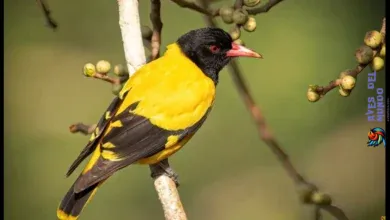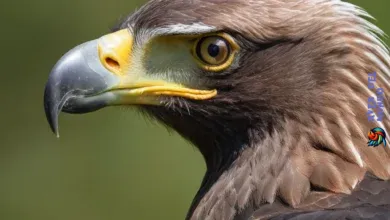A Detailed Look at Our Feathered Friends
Birdwatching is a beloved pastime for many nature enthusiasts, offering a peaceful way to connect with the environment. Whether you’re in a bustling city, a serene forest, or a quiet suburban garden, birds are an omnipresent part of our world.
This blog will explore some of the most common birds, detailing their distinctive features, habitats, and behaviors. We will cover a variety of birds from North America and Europe, providing a comprehensive guide for both novice and experienced birdwatchers.
1. American Robin
- Description: Recognizable by their rusty orange bellies and gray backs.
- Habitat: Found throughout North America, from cities to forests.
- Behavior: Their rich, throaty songs provide a constant soundtrack to our daily lives.
The American Robin is a quintessential symbol of spring in North America. Their cheerful songs are among the first sounds heard at dawn, and their distinctive orange belly makes them easy to identify. Robins are versatile birds, thriving in various environments from dense forests to urban areas. They are often seen foraging on lawns for earthworms, especially after a rain shower.
2. Northern Cardinal
- Description: Males have bright red plumage, while females wear soft, tawny feathers.
- Habitat: Often seen at feeders and around mixed habitats in the East and parts of the Southwest.
- Significance: The Northern Cardinal is a popular state bird and sports team mascot.
The Northern Cardinal is one of the most easily recognized and loved birds in North America. Males are known for their vivid red color, while females, though less colorful, are equally striking with their warm brown tones and hints of red. Cardinals are frequent visitors to bird feeders, especially in the winter, providing a splash of color against the snow. Their clear, whistling songs add a pleasant musical backdrop to many gardens.
3. Mourning Dove
- Description: One of the most plentiful birds globally, with an estimated population of around 475 million.
- Habitat: Found across North America and migrates from northern to southern regions during winter.
Mourning Doves are slender, graceful birds with a soft, melancholy cooing that has endeared them to many. They are adaptable and can be found in a variety of habitats, including open fields, woodlands, and urban areas. Their name comes from their sorrowful-sounding call, which is often mistaken for an owl. Mourning Doves are prolific breeders, which contributes to their large population.
4. House Sparrow
- Description: Common in metropolitan environments worldwide.
- Appearance: Recognizable by their brown and gray plumage.
- Habitat: Often seen in gardens and around human habitation.
House Sparrows are among the most widespread birds globally, easily adapting to urban environments. Originally from Europe and Asia, they have successfully spread to almost every corner of the world. These small birds are highly social, often seen in flocks around food sources. Their adaptability and close association with human habitation make them a familiar sight in cities and towns.
5. Wood Pigeon
- Description: Large, plump pigeons with a distinctive white neck patch.
- Habitat: Common in gardens, parks, and woodlands across Europe and Asia.
- Call: Recognizable by their cooing calls.
The Wood Pigeon is the largest pigeon species in Europe and Asia, known for its robust body and distinct white neck patch. These birds are commonly found in both rural and urban settings, often in large flocks. Their deep, cooing calls are a familiar sound in many regions, adding a soothing backdrop to the environment. Wood Pigeons are also known for their strong flight capabilities, often seen flying swiftly overhead.
6. Blackbird
- Description: Male blackbirds are black with a bright yellow eye ring, while females are brown with streaked underparts.
- Habitat: Common in gardens, parks, and woodlands in Europe and Asia.
Blackbirds are a staple of European and Asian landscapes, easily recognized by their contrasting plumages. Males are glossy black with striking yellow eye rings and beaks, while females are more subdued in brown tones with streaked underparts. Their melodious songs are a highlight of early mornings and evenings, bringing a touch of nature’s music to human surroundings. Blackbirds are versatile in their feeding habits, often seen hunting for worms and insects in lawns and gardens.
7. Chaffinch
- Description: Small, colorful finches with a blue-gray cap and pinkish breast.
- Habitat: Found across Europe and Asia, often seen at bird feeders.
Chaffinches are among the most colorful and charming of the finch family. Males display a beautiful combination of blue-gray caps, pinkish breasts, and greenish backs, making them a delight to spot. Females are more subdued but equally lovely in their soft brown hues. Chaffinches are frequent visitors to bird feeders, especially during the colder months when natural food sources are scarce. Their cheerful songs add vibrancy to the natural soundscape.
8. Blue Tit
- Description: Small, lively birds with blue and yellow plumage.
- Habitat: Common in gardens, woodlands, and parks in Europe.
- Behavior: Known for their acrobatic feeding behavior.
Blue Tits are small but full of personality, easily recognized by their vibrant blue and yellow plumage. These energetic birds are known for their acrobatic skills, often seen hanging upside down from branches as they forage for insects and seeds. Blue Tits are common garden visitors and are particularly fond of suet feeders and peanut dispensers. Their inquisitive nature and striking appearance make them a favorite among birdwatchers.
9. Dunnock
- Description: Sparrow-sized birds with plain brown plumage.
- Habitat: Often seen foraging on the ground in gardens and hedgerows, found in Europe and parts of Asia.
Dunnocks, also known as hedge sparrows, are modest-looking birds with plain brown and gray plumage. Despite their unassuming appearance, they have interesting behaviors, particularly their complex mating systems involving multiple partners. Dunnocks are often seen skittering along the ground, searching for insects and seeds in leaf litter. They are quiet birds, usually staying close to cover in hedges and dense shrubs.
10. Meadow Pipit
- Description: Small, streaked birds with a slender bill.
- Habitat: Common in grasslands, meadows, and moorlands across Europe.
- Behavior: Recognizable by their fluttering display flights.
Meadow Pipits are delicate, streaked birds commonly found in open landscapes such as meadows and moorlands. They are known for their characteristic fluttering flight displays, often performed during the breeding season. These birds are ground feeders, primarily eating insects and seeds. Meadow Pipits are important indicators of the health of their grassland habitats, making their presence significant for environmental monitoring.
Birdwatching Tips and Conservation
Birdwatching can be a highly rewarding activity, offering both relaxation and educational opportunities. Here are some tips for getting the most out of your birdwatching experience:
- Equipment: Invest in a good pair of binoculars and a field guide to help identify different species.
- Patience: Birds can be elusive, so patience and quiet observation are key.
- Habitat Exploration: Different birds prefer different habitats, so explore a variety of environments.
- Recording: Keep a journal or use a birdwatching app to record your sightings and track patterns.
Conservation is critical for maintaining bird populations and biodiversity. Here are some ways to contribute to bird conservation:
- Habitat Preservation: Support efforts to protect natural habitats from development and pollution.
- Feeding: Provide bird feeders and birdbaths, especially during harsh weather conditions.
- Gardening: Plant native shrubs and trees that offer food and shelter for birds.
- Citizen Science: Participate in bird counts and monitoring programs to help track bird populations.
Conclusion
Birds are an integral part of our ecosystems, contributing to biodiversity and adding beauty to our world. Whether it’s the vibrant Northern Cardinal, the melodious Blackbird, or the acrobatic Blue Tit, each species brings something unique to the tapestry of nature. By understanding and appreciating these common birds, we can foster a deeper connection to the natural world and support efforts to protect these feathered friends for future generations. Happy birdwatching!



